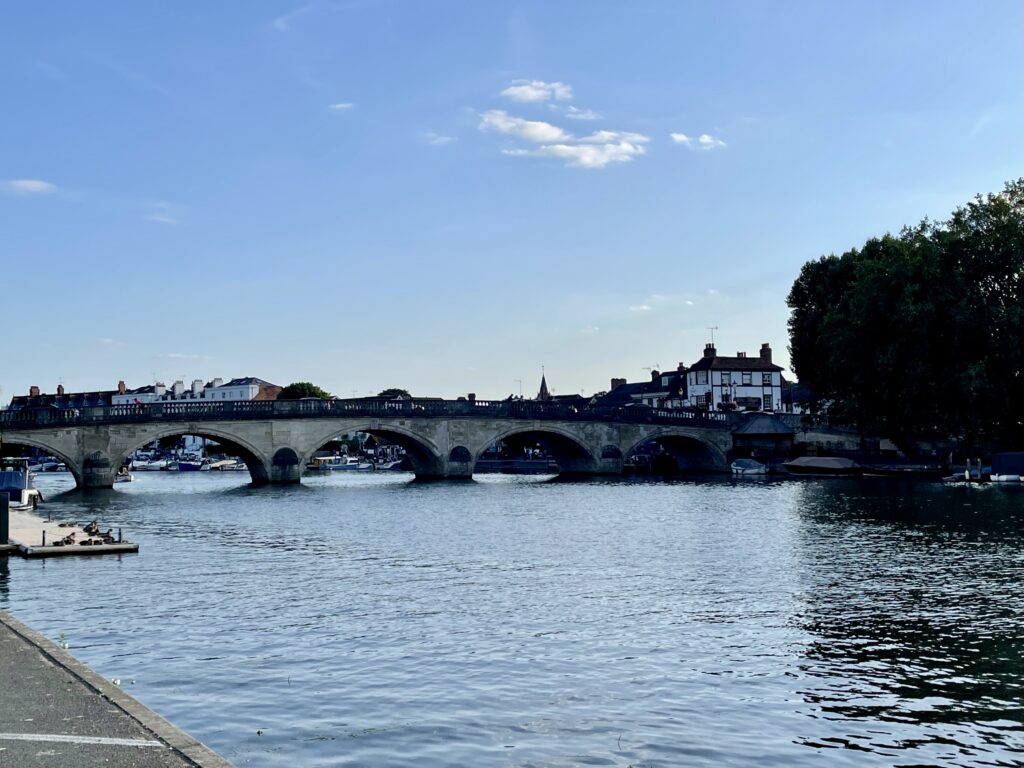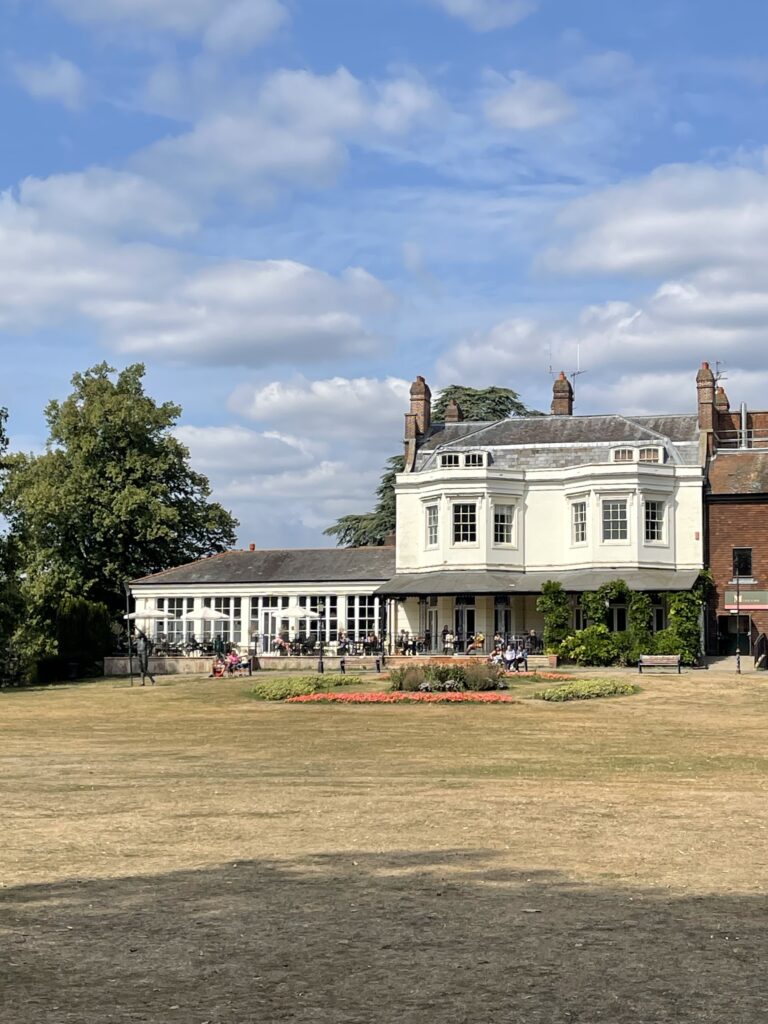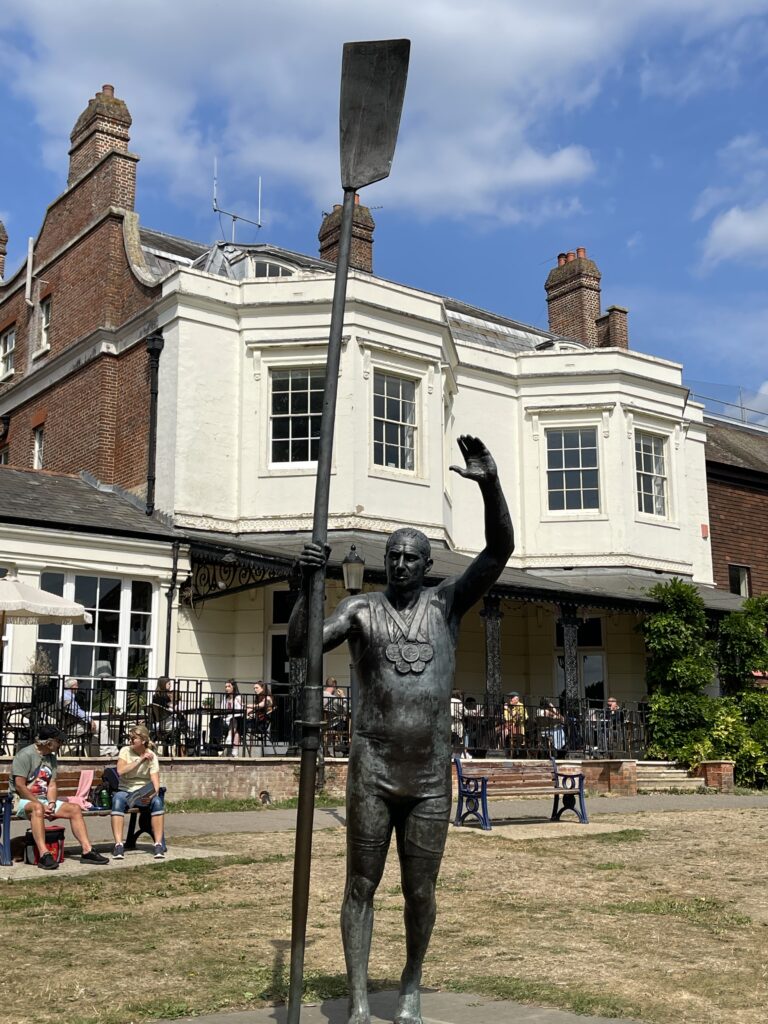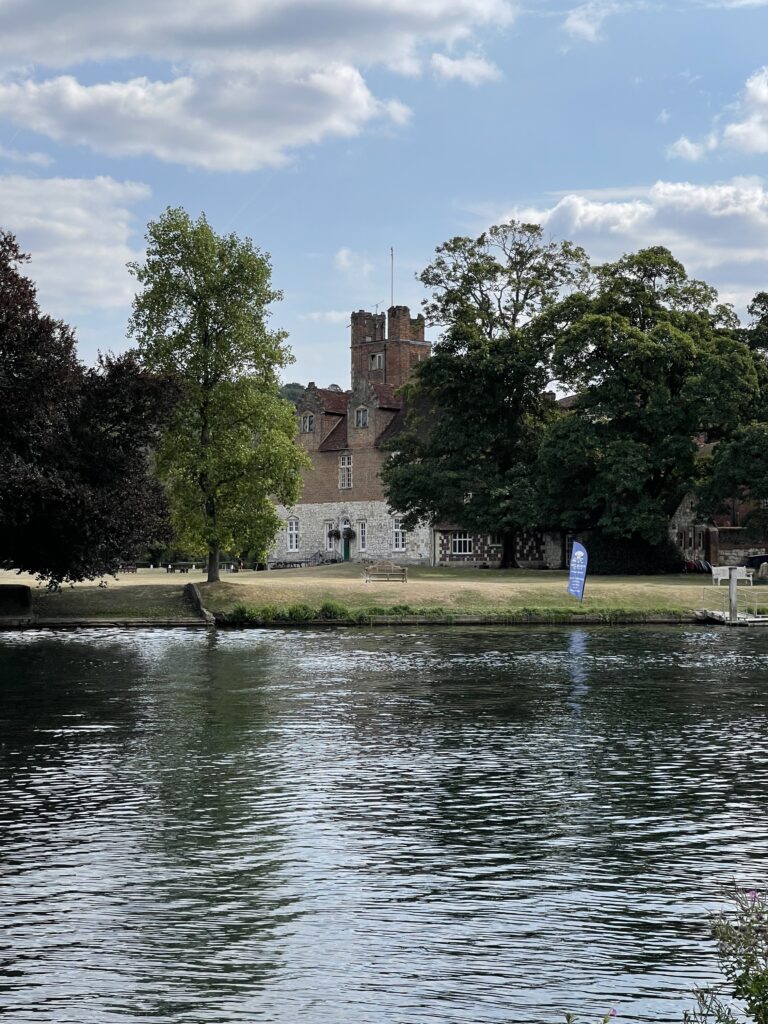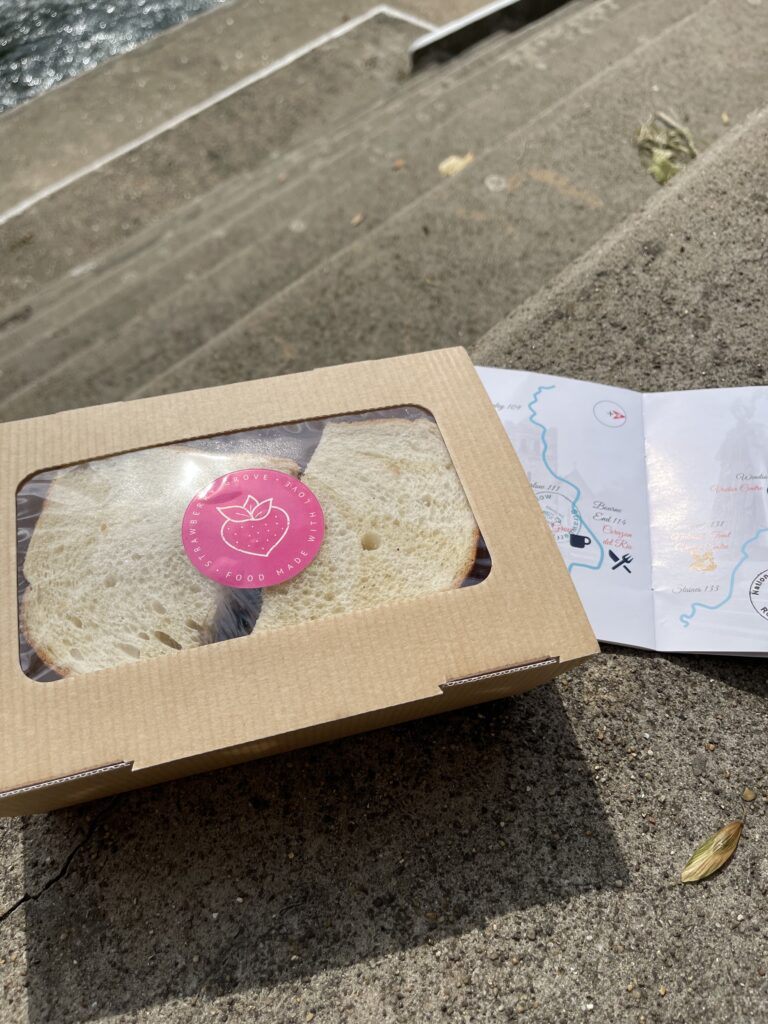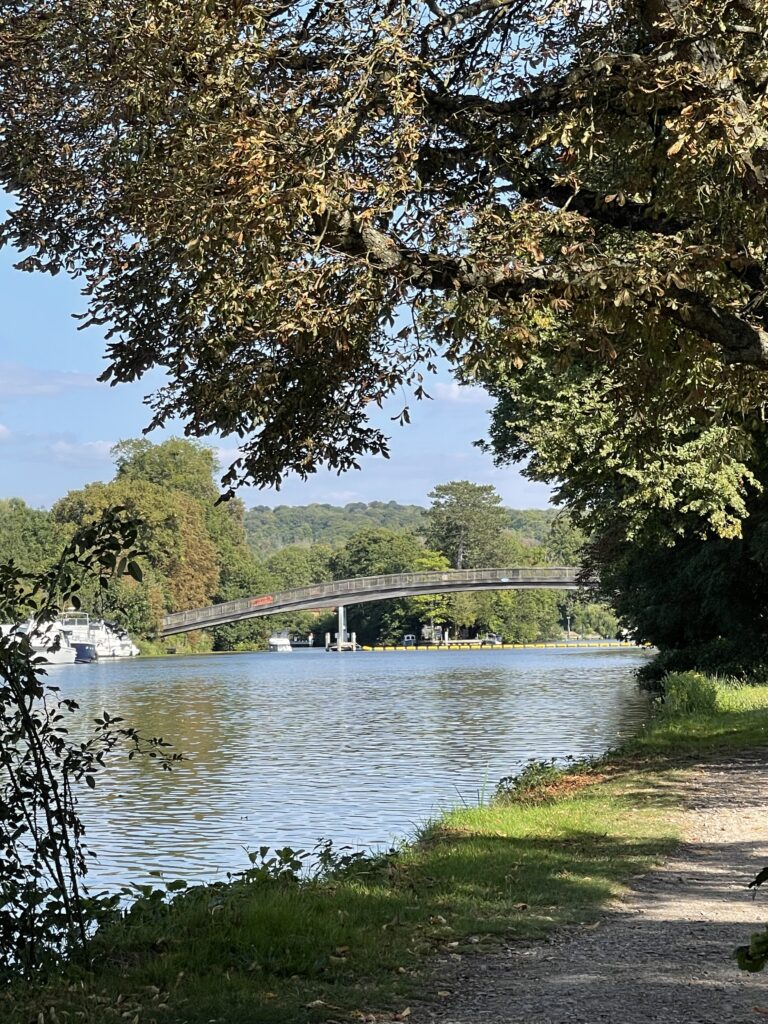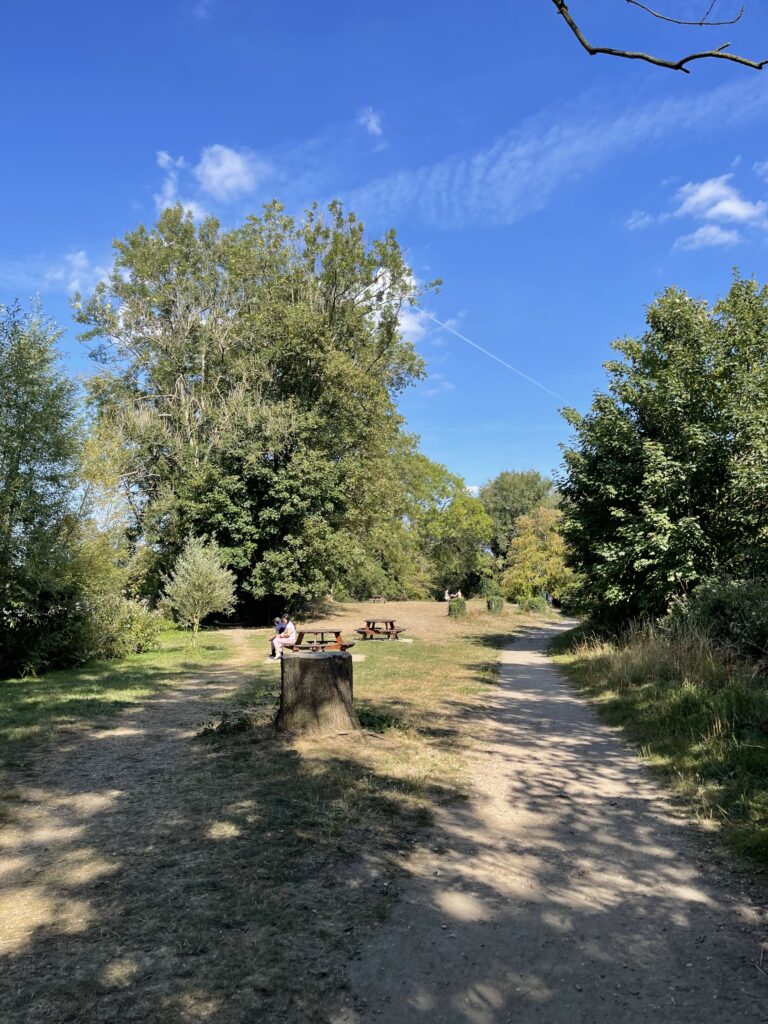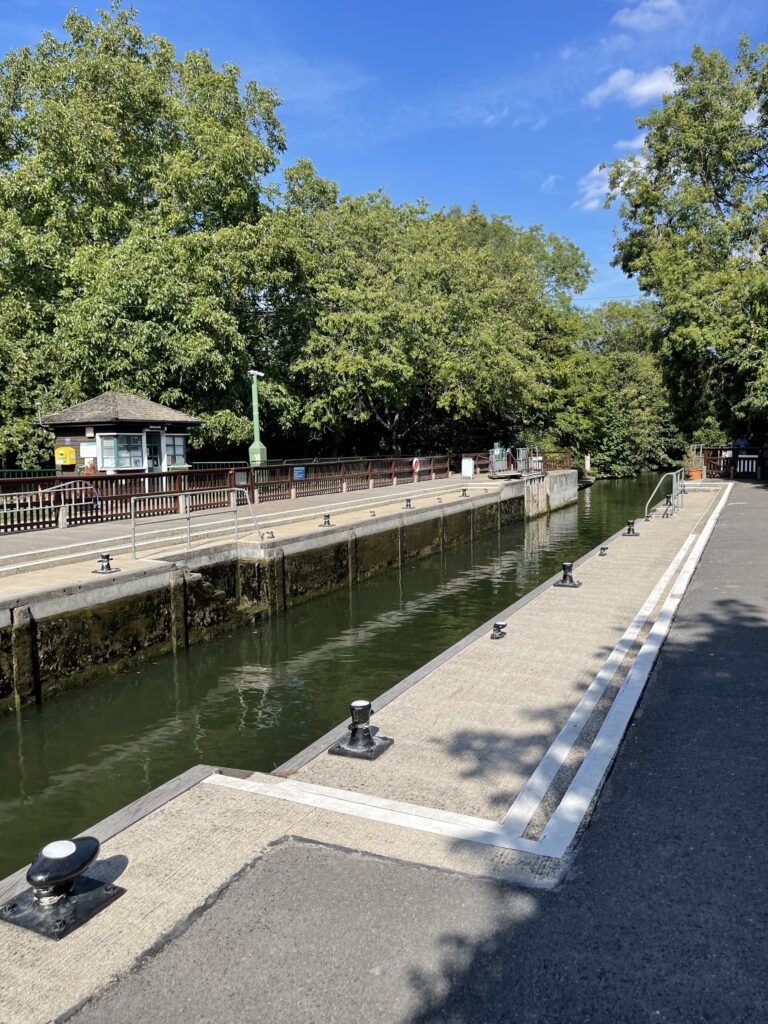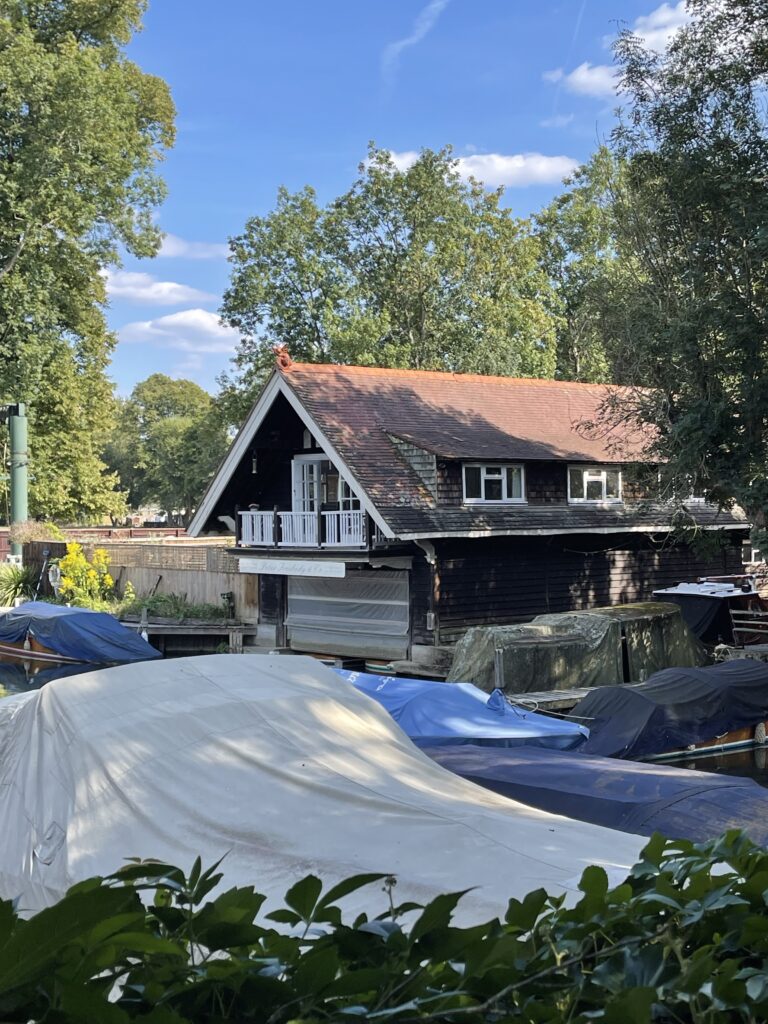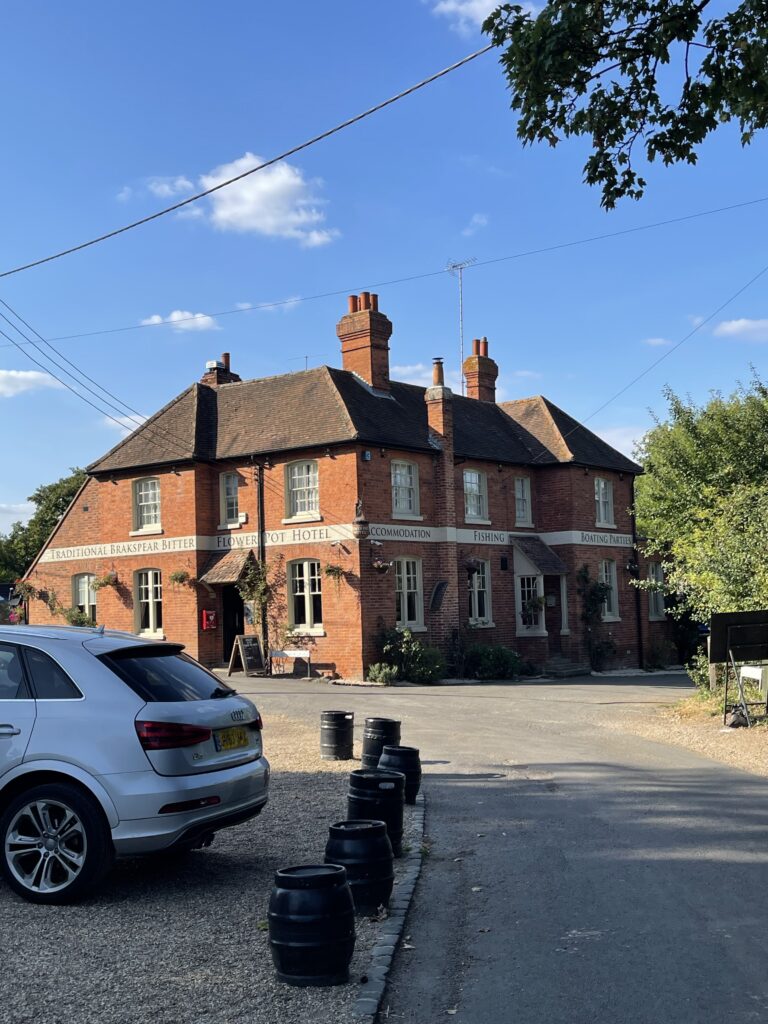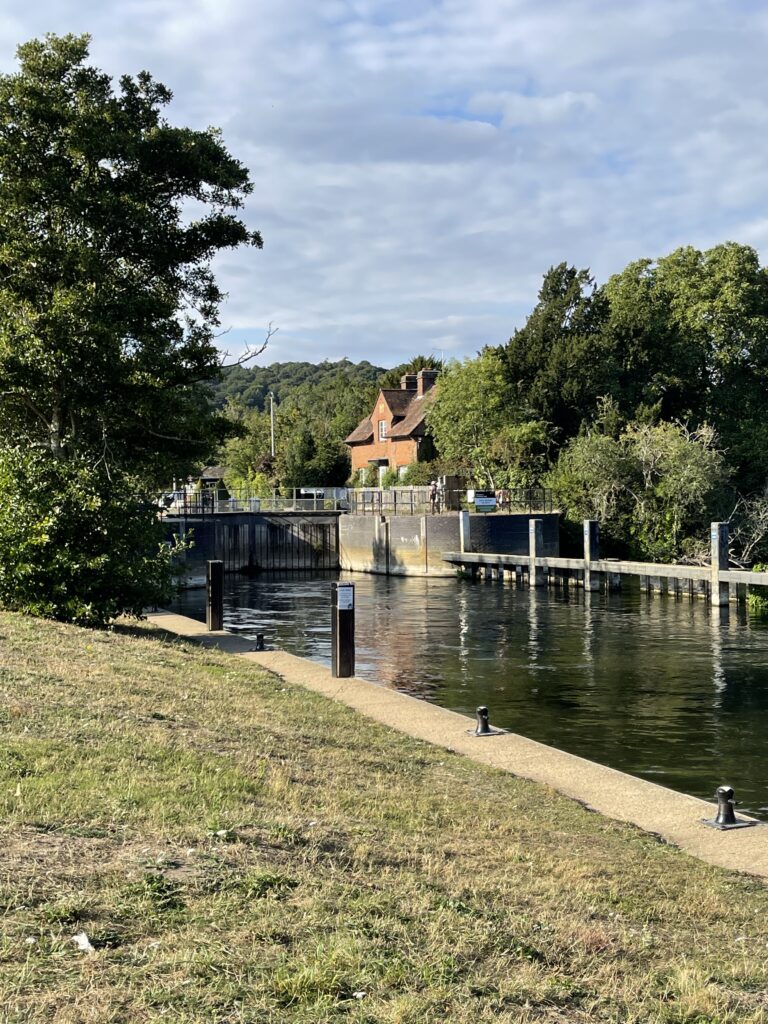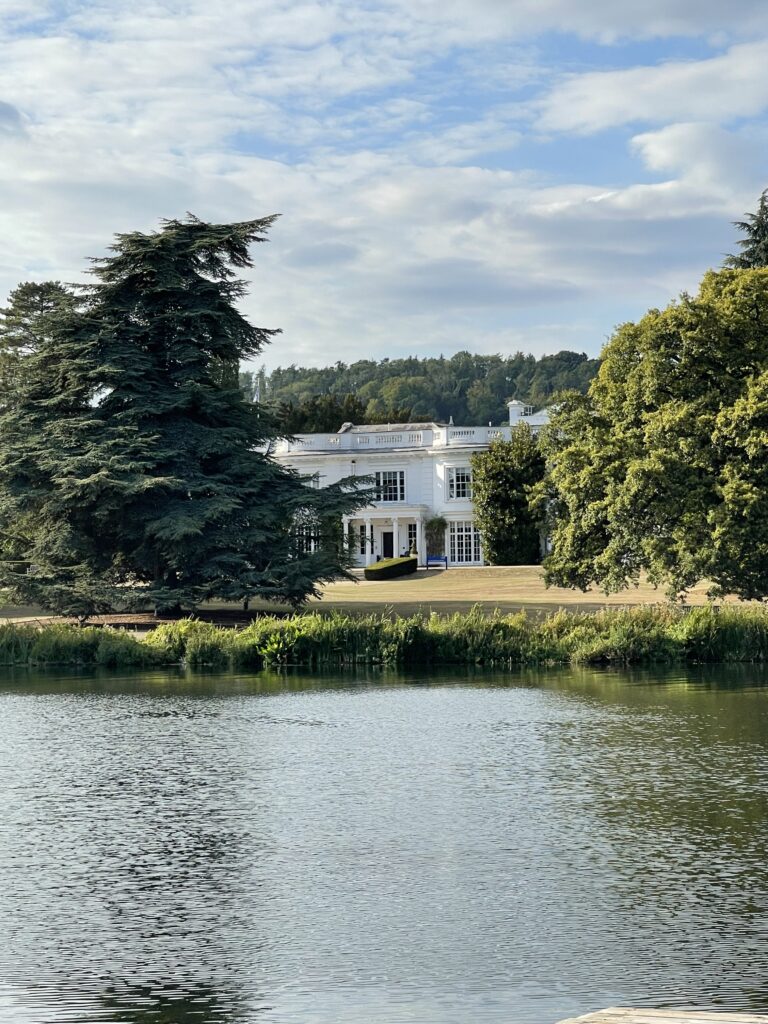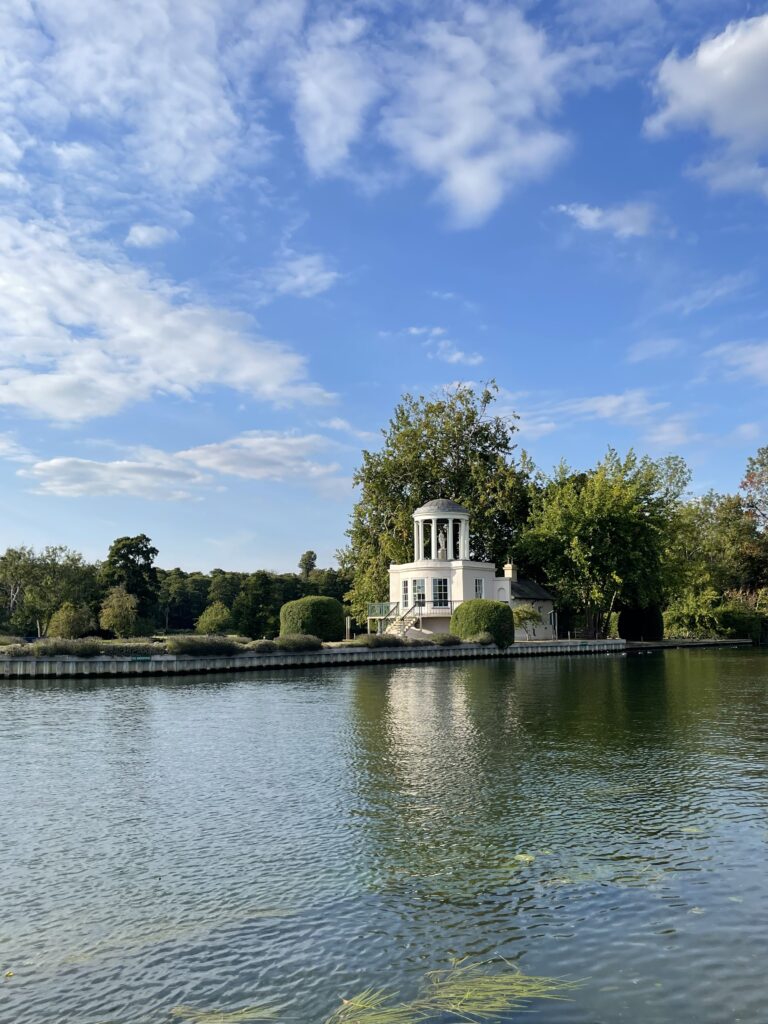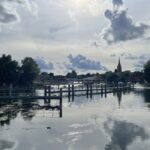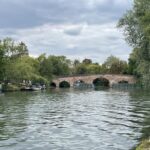Total Distance: 9.4 miles
(map adjusted for diversion)
Time: 4 hours 02 minutes
Points of Interest:
Marlow Bridge
Higginson Park
Court Garden House
Statue of Sir Steve Redgrave
Temple Lock
Bisham Church
Bisham Abbey
Hurley Lock
Danesfield House
Culham Court estate
Flower Pot hotel
Hambledon Lock
Greenlands Mansion
Temple Island
Henley Bridge
We left early, hoping to get to Marlow by midday. The plan was a two-and-a-half-hour trip: Elizabeth Line to Maidenhead, then a connecting train to Marlow. But at Maidenhead, we found out the Marlow train would only go as far as Bourne End, and GWR would sort out a taxi for the rest of the way. That was fine, even with one passenger’s super loud speakerphone call. Luckily, the taxi ride was quick, only about 10 minutes.
Our first stop when we got to Marlow was The Strawberry Grove café to grab a sandwich to have later, and more importantly, my next stamp in my Walk the Thames passport. We then made our way Higginson Park.
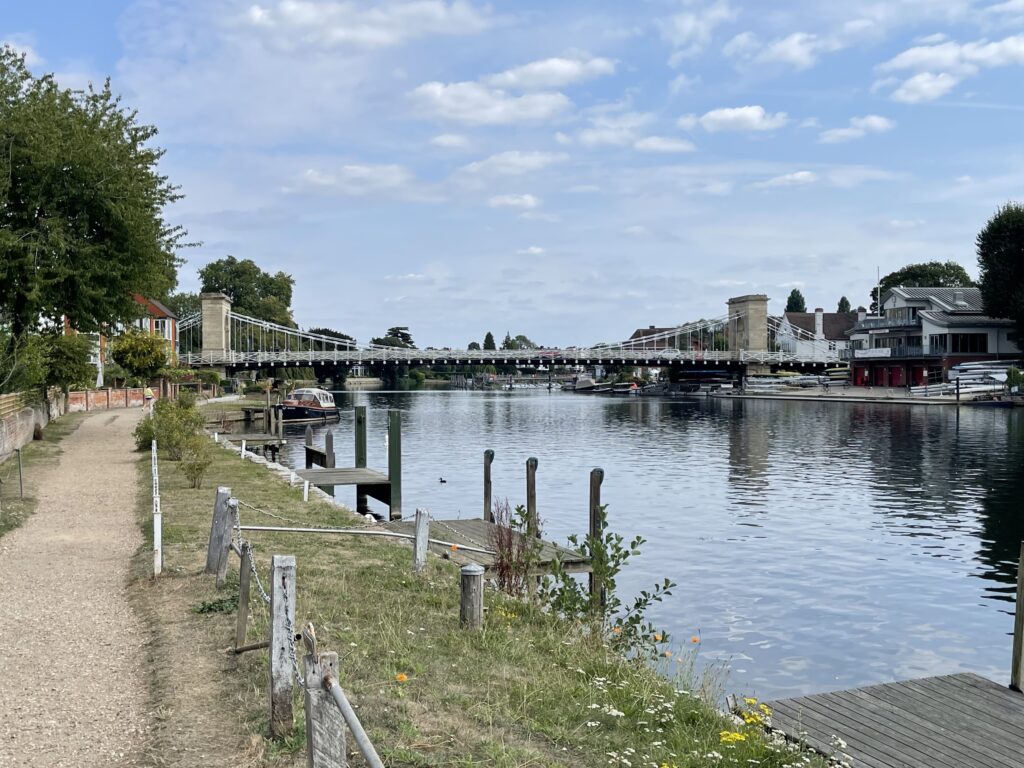
“Marlow is one of the pleasantest river centres I know of. It is a bustling, lively little town; not very picturesque on the whole, it is true, but there are many quaint nooks and corners to be found in it”
– Jerome K. Jerome, Three Men in a Boat
Established in the early 20th century, the Park owes its existence to Sir William Higginson, a local benefactor who donated the land to the town. Within its grounds, you’ll find Court Garden House, a Georgian townhouse dating back to 1758. This historic house now serves as a popular venue for weddings and other special events. In front of the house stands a statue of Sir Steve Redgrave, commemorating his achievement of five consecutive Olympic rowing medals. Queen Elizabeth II unveiled the statue on May 10, 2002, as part of the Golden Jubilee Celebrations.
As we made our way down to the riverbank to start our journey along the Thames path, there were notices about a diversion around Temple footbridge. I scanned the QR code, which took me to a map, which I couldn’t quite read, so I thought I would have a proper look when I sit down and have my lunch.
Ordinarily, this would be the correct way, but having not seen the diversion map yet, or saw the note in my guidebook, I continued along the Thames path. Upon reaching Temple Lock, a mile, and a half into our walk, we realised our path was blocked. I decided to eat lunch and consult the diversion map. I thought that the diversion may be near the footbridge, but the map showed it crossing Marlow Bridge and continuing along the opposite bank. We had spent an hour walking in the wrong direction, and now had to retrace our steps to follow the diversion.
It wasn’t a complete waste of time though, as we did get a good view of Bisham Church and Bisham Abbey from this side of the bank, along with Temple lock. After I hand my lovely sandwich from the Strawberry Grove café, we headed back to Marlow bridge and followed the diversion towards Bisham. The village of Bisham, recorded as Bistesham in the Domesday Book is home to one of Sport England’s National Sports Centres. The centre is at Bisham Abbey, which was built around 1260 as a community house for two Knights Templar and later the residence of the Montagu Earls of Salisbury and the Hoby family. Lady Hoby, who beat her son to death, haunts the abbey and is seen weeping and wailing, desperately washing out the blood from her hands in a bowl of water that eerily appears in front of her.
After Bisham, the diversion took us along Temple lane towards Hurley and then finally back to the river, just upstream from Temple lock and the closed footbridge that had added 3 miles to our journey (although completely my fault for not looking at the map earlier!)
Back on the Thames Path, we walked towards Hurley Lock, nestled among wooded islands. We crossed a bridge to one of these islands, discovering an idyllic picnic spot with plenty of tables. First constructed in 1773 and rebuilt in 1785, the Lock underwent additional repairs in 1910. The Weir is also the site of the annual Hurley Classic paddle sports event.
“By Hurley Weir, a little higher up, I have often thought I could stay a month without having sufficient time to drink in all the beauty of the scene.”
– Jerome K. Jerome, Three Men in a Boat
Crossing another footbridge and returning to the Thames path, I took a brief wrong turn. This led me to the Peter Freebody & Co boatyard, which was featured in Tony Robinson’s TV program ‘The Thames – Britain’s Great River’. The Freebody family has a rich history of over 300 years living and working on the middle Thames, making theirs one of the oldest boatbuilding names globally. I reckon my next adventure should be to journey up the Thames in one of their luxurious boats!
Back on track, we took a short break near Hurley Riverside Park, and Cher had another swim in the Thames—a frequent occurrence now! I have to stop her if she wants to be carried, though; I don’t want to smell like wet dog!
Across the river, you can spot the turrets of Danesfield House. This former country house, now a hotel and spa, was constructed in a neo-Tudor style between 1899 and 1901. During World War II, the Air Ministry requisitioned it for the RAF, establishing a Joint Service Imagery Intelligence (IMINT) Unit known as RAF Medmenham. The Air Ministry later purchased it, and in 1977, the milk processing company Carnation acquired it for their corporate headquarters. It was transformed into a country house hotel in 1991.
After our short break, we resumed our walk through the park. I walked, while Cher, was nestled in her sling bag carrier, adding extra weight to my shoulders, which were already weighed down by my large backpack.
We made our way through the Culham Court estate. The current red-brick Queen Anne house on the estate was built in 1771 and is grade II listed. The estate features extensive grounds and a private mile and a half of Thames frontage. The estate also has a deer park containing white deer, which we passed through, trying not to scare the deer!
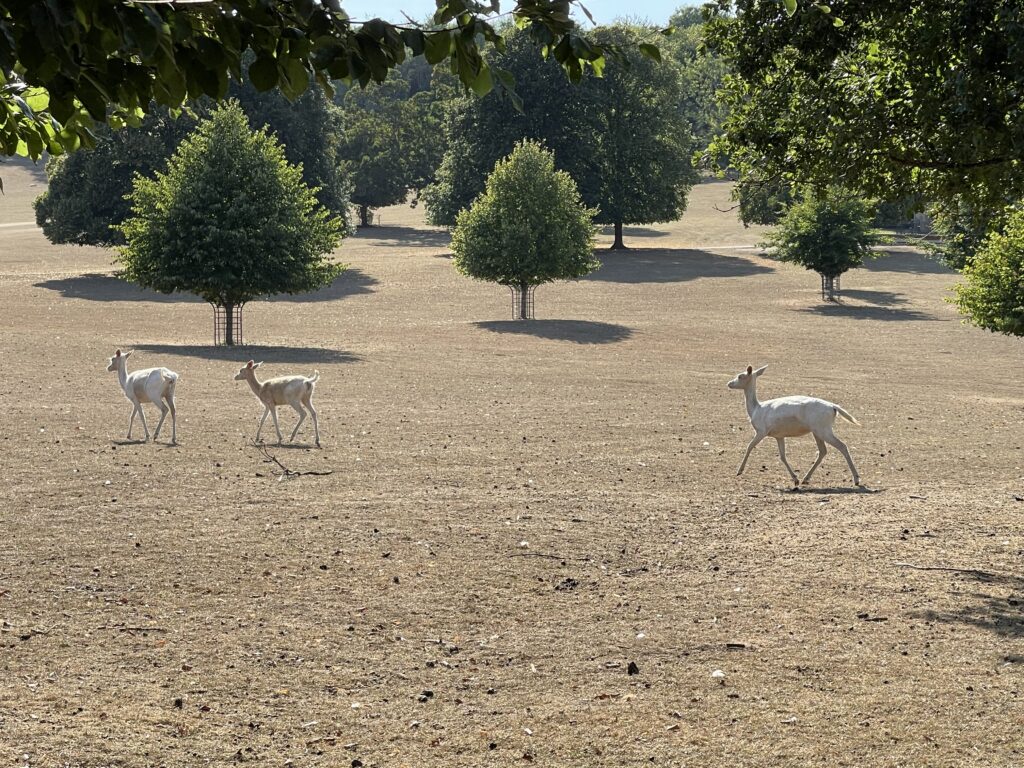
Our route then led us through the village of Aston, passing the historic Flower Pot hotel, which has been open to guests since 1890. Despite the temptation to pause for a quick drink, I decided against it, as I was already behind schedule and keen to reach Henley.
We continued onto Hambledon Lock which was first built in 1773 and was completely rebuilt in 1870. In June 1829, the lock was the starting point for the first boat race between Oxford and Cambridge universities. The course ended upstream at Henley Bridge.
Rounding the bend of the river, Greenlands Mansion appears on the opposite bank. This early 19th-century mansion was once owned by William Henry Smith, son of the founder of W.H. Smith newsagents. Jerome K. Jerome described it in his 1889 novel, Three Men in a Boat, as “the rather uninteresting river residence of my newsagent – a quiet unassuming old gentleman, who may be met with about these regions, during the summer months, sculling himself along in easy vigorous style, or chatting genially to some old lock-keeper, as he passes through.”
With Henley now in sight, we were on the home stretch. We passed Temple Island, marking the start of the Henley Royal Regatta course. This island features a folly, a Grade II listed building constructed in 1771. Originally a fishing lodge for Fawley Court, it is now off-limits to visitors, who require written permission from the Henley Royal Regatta Committee to moor or land on the island.
What a relief to finally reach Henley Bridge! It had been a long walk, especially with our accidental detour, but now we could finally rest. Our lodgings for the night were at The Bull Inn in the village of Wargrave, just a 7-minute train ride away. We rushed to the station, as trains only run every 30 minutes and one was due. I’ll save exploring Henley until tomorrow; what I needed now was some good pub grub and a couple of beers.
